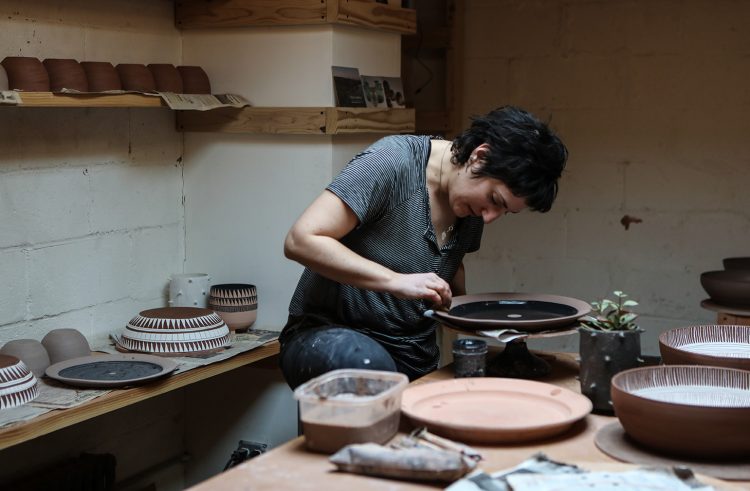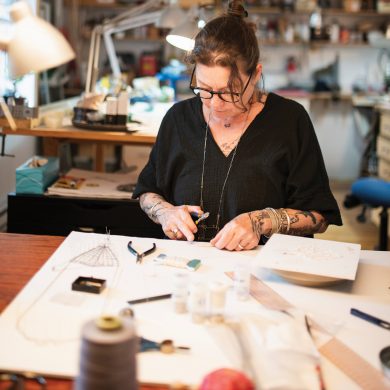
I was born and grew up in Maryland in the suburbs north of Washington, D.C. We’d go to the Smithsonian regularly — I always wanted to go to the National Gallery of Art. I was fortunate to have parents who encouraged me to follow my interests, and by middle school, I was working on television programs and learning video production. I still have a foot in the documentary film world, working on social justice-oriented projects. Growing up just outside of the Beltway, I am regularly contemplating how politics affect our lives.
It looks like you’re out of free articles.
Become a Women Create member to read this full article.
Already a member? Sign in

Monthly Membership
- Unlimited access to the Women Create website
- Monthly Maker Moments livestreams, members-only newsletters and more

Annual Memberships
- Unlimited access to the Women Create website
- Print and digital subscriptions of WHAT Women Create magazine, WHERE Women Create magazine, or both
- Monthly Maker Moments livestreams, members-only newsletters and more







